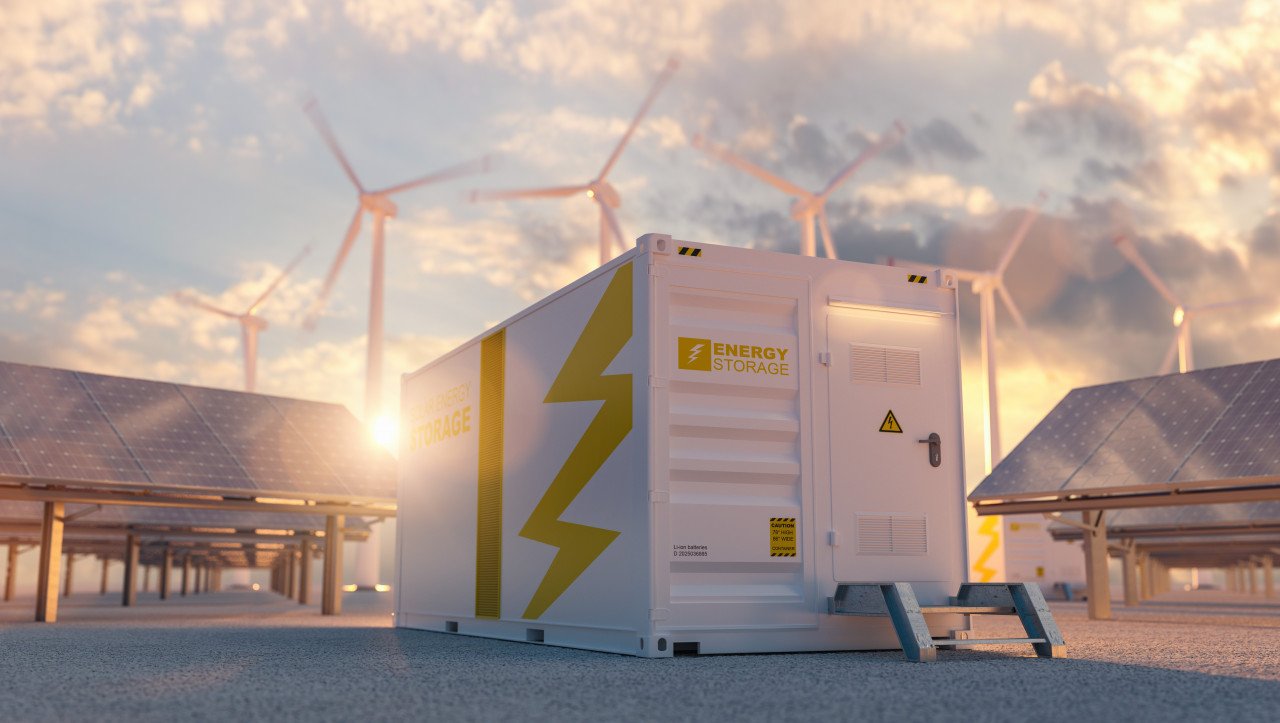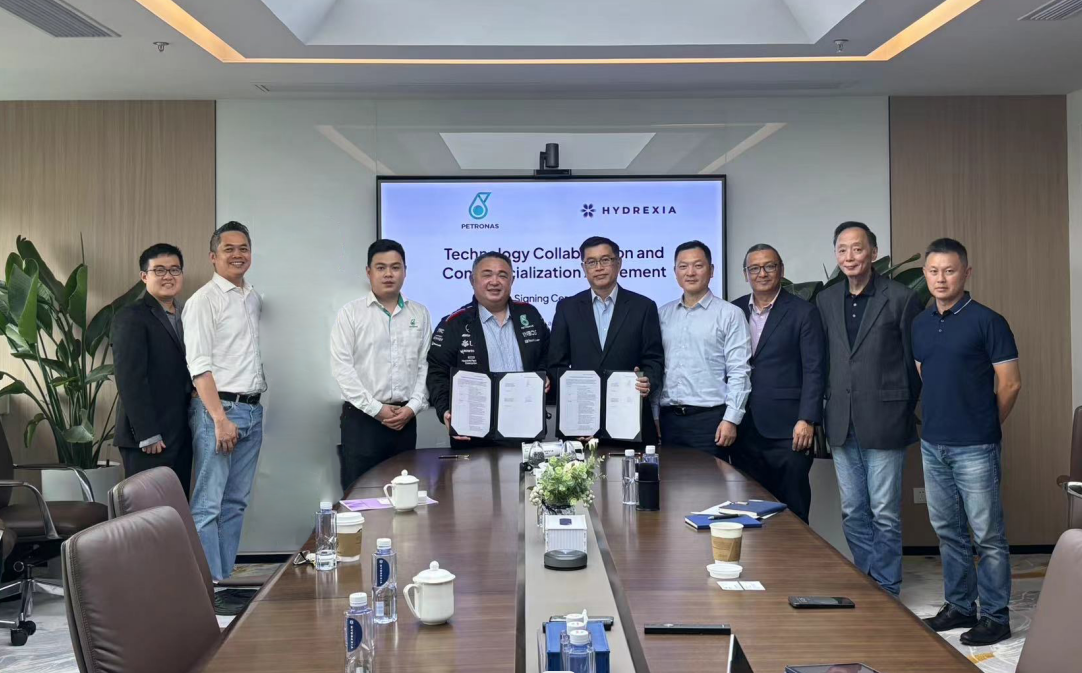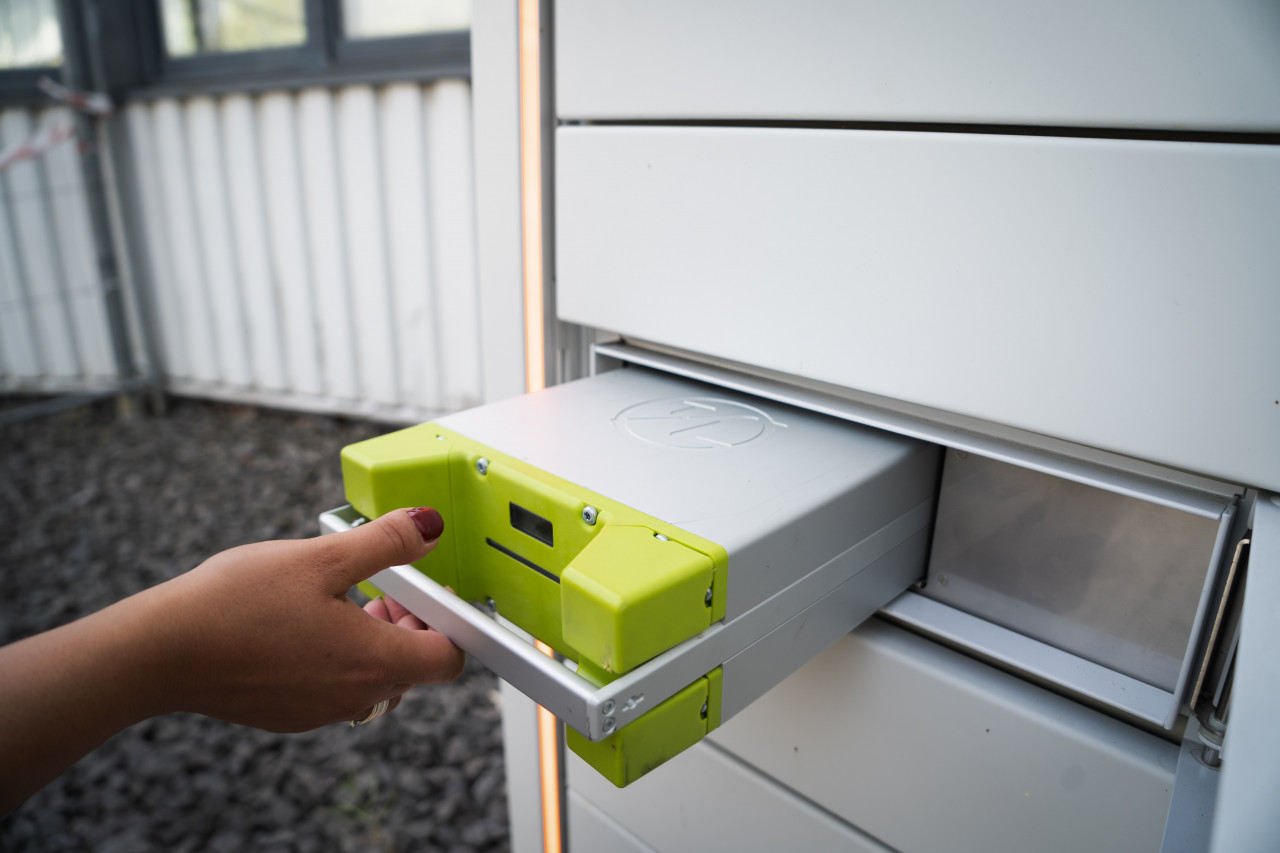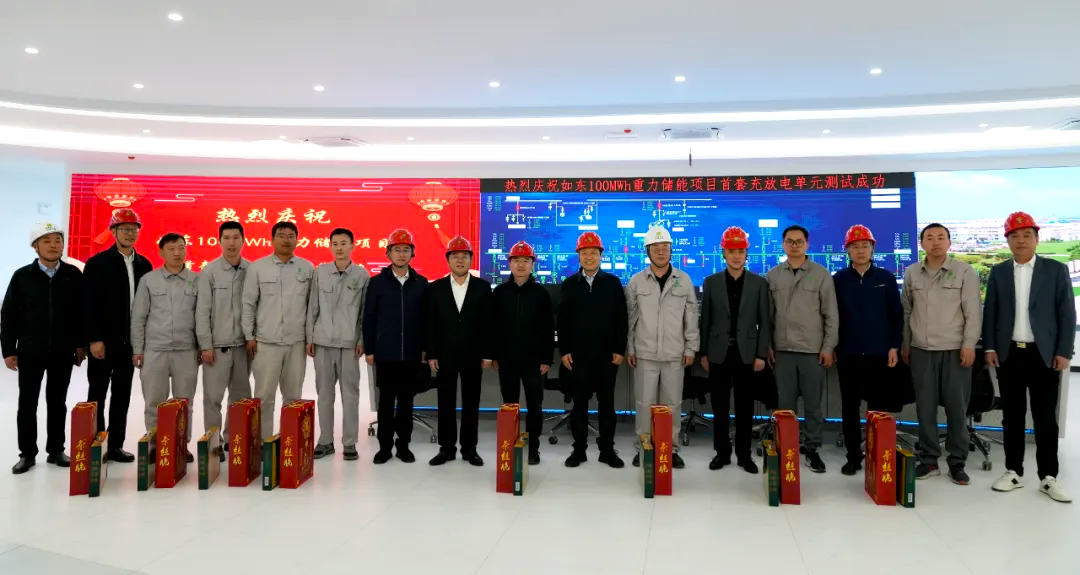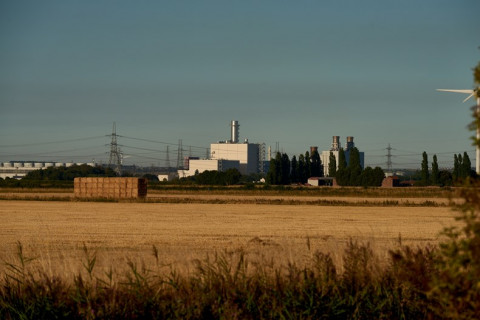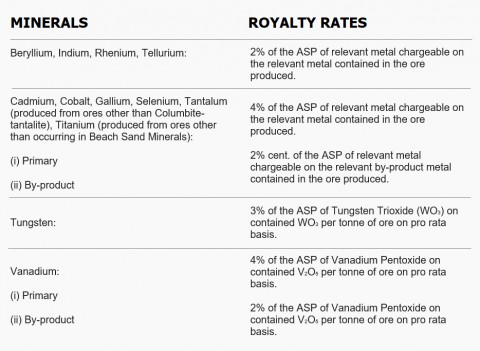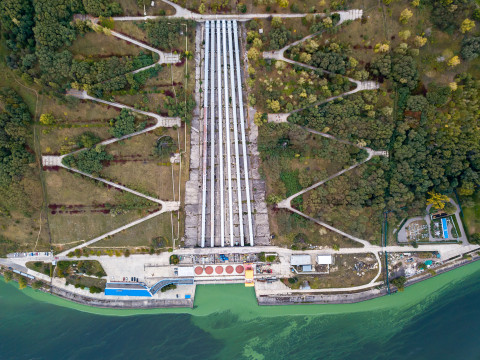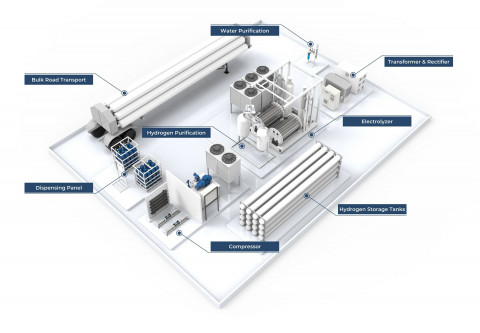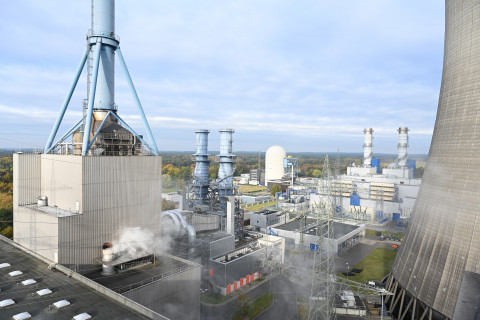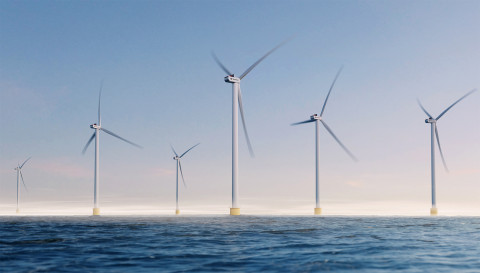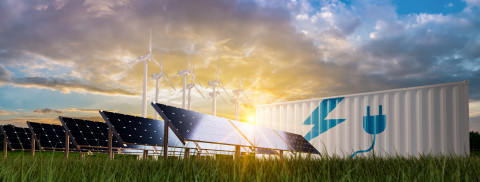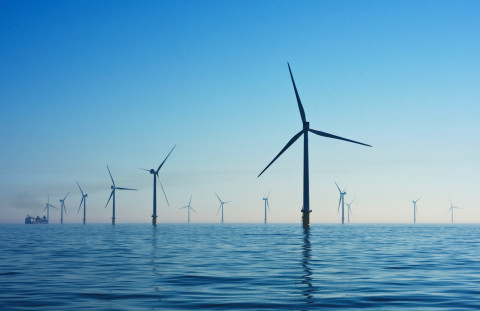Indian RE sector pursues development, the Aatmanirbhar way
India is set to venture into a very dynamic phase of energy development, and the improved emphasis provided in the Union Budget 2021-22 certifies its role in India's ambitious zero emission power generation plan by 2030.
The global dependency on renewables is rapidly increasing as countries continue to capitalize heavily on cost-effective sustainable energy solutions. The past few years have observed not just stiff competition among companies in this sector, but also a growth of the installed capacity of solar PV.
The government of India had set an ambitious target of installing 175 GW of RE capacity by 2022, which has been increased to 450 GW by 2030, as committed by the Prime Minister in the UN Climate Action summit. It is a grueling target and the total investment required to accomplish the initial target of 175 GW only has been projected at over $150-200 billion.
India has witnessed astonishing success in its recent energy development, but several challenges remain. The performance of the industry has been unfavorably affected in 2020 due to COVID-19 and related issues.
The industry is stressed with issues like the lack of a clear regulatory framework in the sector at both Centre and State levels, swiftly falling tariffs, a shortage of long-term competitive finance options, and high and ambiguous taxation structures. The poor financial health of the DISCOMs, who are major purchasers of this power, has further lowered the charm of the industry in the eyes of international and domestic investors and lenders due to their poor track record of payments and frequent changes in State-level policies - particularly relating to the rooftop and open access projects. As India recovers from a COVID-19 induced slump in 2020, it is re-entering a very dynamic period in its energy development.
The overall share of renewable energy (including large hydro projects) in the country's installed power capacity mix stood at 138.27 GW, with a total share of 36.7 percent at the end of 2020, as per data from the Central Energy Authority (CEA), the Ministry of New and Renewable Energy (MNRE).
India's cumulative installed capacity up to December 2020
Indian PM echoes optimism
Speaking at the 3rd Global Renewable Energy Investment Meeting and Expo (RE-INVEST 2020) through video conferencing, Prime Minister Narendra Modi expressed happiness that in the RE sector, within a short time the progress from megawatts to gigawatts in generation capacity and 'One Sun, One World, One Grid', are becoming a reality. He added that in the last six years, India is traveling on an unparalleled journey. He pointed out that India's generation capacity and the network is being expanded to ensure all citizens of India have access to electricity to unlock their full potential. He showcased that today, India's renewable power capacity is the 4th largest in the world and is growing at the fastest speed among all major countries. The RE capacity in India is currently 136 GW, which is about 36 percent of our total capacity
He also stated that India's annual RE capacity addition has been exceeding that of coal-based thermal power since 2017. He highlighted that in the last six years, India has increased installed RE capacity by two and a half times. Investing in RE early on, even when it was not affordable, has helped in achieving the scale, which is bringing costs down. He said India is showing to the world that sound environmental policies can also be sound economics. The government has ensured that energy efficiency is not limited to one ministry or department, instead, it has been turned into a target for the entire government. All government policies have a consideration of achieving energy efficiency.
After the success of Performance Linked Incentives (PLI) in electronics manufacturing, the government has decided to give similar incentives to high-efficiency solar modules. Ensuring 'ease of doing business is the government's utmost priority and dedicated project development cells have been established to facilitate investors. India has huge RE deployment plans for the next decade and is likely to generate business prospects of the order of around $20 billion per year.
Union Budget 2021: focus on clean energy
The 2021-22 Budget tabled in the parliament by Finance Minister Nirmala Sitharaman, allocated ₹220 billion (~$3.08 billion) for the power and renewable sector.
Some of the major budget outlays in the power sector include ₹26 billion (~$356 million) for solar power and ₹11 billion (~$150 million) for wind power.
The largest outlay was for the Integrated Power Development Scheme (IPDS), which received a whopping ₹53 billion (~$724 million). One of the main programs of IPDS is smart meter installations.
Production linked incentive scheme
Speaking of the Aatmanirbhar Bharat vision and the PLI scheme, the FM noted that for a $5 trillion economy India's manufacturing sector would have to record a double-digit growth on a sustained basis. To achieve this ambitious goal, the government has announced the PLI Scheme for 13 key sectors (including Advanced Chemistry Cell battery manufacturing, automobiles, and auto components) and committed ₹1.97 lakh crore for over five years starting this financial year.
"This initiative will help bring scale and size in key sectors, create and nurture global champions, and provide jobs to our youth," Sitharaman emphasized.
Power infrastructure reforms
Highlighting a need for a framework to give consumers alternatives to choose from among more than a few distribution companies, and expressing concern over the viability of the distribution companies, FM proposed to launch a revamped reforms-based result-linked power distribution sector scheme with an outlay of ₹3,05,984 crore over the five years.
The scheme will assist DISCOMs for infrastructure creation, including pre-paid smart metering and feeder separation, up-gradation of systems, etc., tied to financial improvements.
Hydrogen economy
In November 2020, PM Modi in the 3rd Global RE-INVEST Meet announced plans of a Comprehensive National Hydrogen Energy Mission. The FM announced a proposal to launch a Hydrogen Energy Mission in 2021-22 for generating hydrogen from green power sources.
Non-conventional energy
To boost power generation from the non-conventional energy sector, the FM proposed an additional capital infusion of ₹1,000 crore to Solar Energy Corporation of India Limited and ₹1,500 crore to the Indian Renewable Energy Development Agency Limited (IREDA).
"We have already acknowledged that solar energy has huge promise for India. To build up domestic capacity, we will notify a phased manufacturing plan for solar cells and solar panels," she added. To encourage domestic production, the FM also proposed to raise duty on solar invertors from 5 percent to 20 percent, and on solar lanterns from 5 percent to 15 percent.
Minister R K Singh signals positive growth
Affirming that the Union Budget 2021-22 will pave the way for comprehensive growth in the economy, R K Singh, Minister, of Power - New and Renewable Energy and Skills, Government of India, has said that the country's energy consumption touched an all-time high of 1.89 million GW in January and this is a sign that India's economy is on a path of growth.
"In October 2020, the country's energy consumption increased by 13 percent (1.86 lakh GW) over the previous year. In January this year, it reached an all-time high of 1.89 million GW. This is an indication that our economy is on a growth path."
"Another important fact is that the Ministry of Power has generated 28 million new beneficiaries in the last 20 months through schemes like Saubhagya. For the first time since independence, all the villages and houses in the country have been brought under the power grid. These 28 million consumers are involved in measures to reinforce the economy in various ways," the minister stated.
"Numerous steps have been taken to reinforce the country's energy supply chain. Steps will be taken to set up more substations and upgrade existing ones. India's growth rate in the RE sector was one of the highest in the world. India has become one of the most attractive destinations for investors. Over the past five years, the country has received $64 billion as an investment in the power sector," Mr. Singh expressed.
Industry outlook for 2021
To learn more about the industry's viewpoint on clean energy sector development in the year 2021, ETN connected with a few of the seasoned industry players.
Simarpreet Singh, Director - Hartek Group
Expectations for the year 2021
The transmission and distribution (T&D) segment will witness a decisive shift towards extra-high voltage transmission lines and substations, bearing in mind the proactive approach of the Power Grid Corporation of India and the massive investments being pumped in by the government in T&D projects like the Green Energy Corridor. The upgrade to substations in the range of 400 kV and above will be taken up on a war footing.
Things will fast return to normal in 2021 as far as solar projects are concerned, with the restoration of supply chains and revival of pent-up demand. Some experts even expect a strong rebound of rooftop solar installations on account of these factors by June. This comeback will largely be driven by the increase in demand for rooftop solar installations from commercial and industrial consumers, a trend that will catch up in the coming months.
Product/Technology/Policy to stimulate sector growth
Customized plug-and-play rooftop solar kits will go a long way in driving the adoption of rooftop solar. Hartek Solar is among the first companies to introduce these kits based on a unique remote sensing technology made commercially feasible for small-scale plants by linking remote sensing with consumers' Wi-Fi or GPRS SIM card to get alerts on cleaning and maintenance as well as real-time data on energy generation and savings.
Another revolutionary technology that will shape the growth of the T&D industry in the coming years is artificial intelligence (AI) based applications and smart grid technologies. As far as policies are concerned, we feel that attractive net metering policies will prove to be a game-changer in pushing the demand for rooftop solar in the residential segment. Making rooftop solar installations mandatory for new buildings will prove decisive in enabling the rooftop solar segment to grow at a faster pace than utility-scale projects, considering the massive urban expansion taking place in India.
Growth plans for the year
In the T&D space, our flagship company Hartek Solar will be targeting high-voltage and extra-high voltage substations based on the latest cutting-edge technologies in a big way, apart from executing gas-insulated substations and digital substations equipped with smart grid technologies, SCADA, and other automation devices. We will also add to our solar EPC portfolio through large projects in mega solar parks. Sustainability being at the core of our strategies, we aim at strengthening our rooftop solar portfolio as well. Our rooftop solar division has executed 40-MW projects. We are looking to double it by the end of this year.
Product launch/ facility development plans
While we are already contributing towards the country's clean energy ecosystem through our rooftop solar solutions, we are aggressively working on smart grid systems based on the latest automation technologies. These real-time interactive technologies based on automated and computerized applications optimize the physical operation of appliances and consumer devices and minimize downtime. They not only detect faults and identify faulty equipment but also reduce the need for manpower and bring down the costs, aided by lower operation and maintenance expenses, besides ensuring a faster response.
Industry-readiness for ACC manufacturing
The industry in India is slowly but surely bracing for Advanced Chemistry Cell manufacturing, with the Niti Aayog issuing a draft request for proposal to prospective bidders who can manufacture ACCs. ACC refers to the new generation advanced storage technologies that can store energy either as electrochemical or as chemical energy and convert it back to electric energy as and when required. With the Central government approving ₹18,000 crore production-linked incentive to this effect, many manufacturers have started evincing interest in this upcoming technology to avail the benefits of the subsidies offered under the scheme.
Animesh Damani, Partner - Artha Energy Resources
Expectations for the year 2021
Considering the way 2020 has happened, a lot of projects were delayed or postponed due to the COVID-19 pandemic. I feel 2021 will be a very prosperous year for the solar sector in general, a lot of the backlogged projects will be seeing commissioning in the first quarter of this calendar year. Currently, the commercial and industrial segment has rebounded strongly and is leading the growth of the rooftop solar segment.
Considering the extreme price volatility in solar panels and shipping prices, we hope for more stable pricing in 2021. Lastly, we hope the Central government repeals the cap of 10 kW that has been put on net-metering. We hope for a net-metering policy that is a catalyst for growth in the roof-top solar segment and compensates the utilities for using their infrastructure when solar generation is exported.
Product/Technology/Policy to stimulate sector growth
The government should revise the entire rooftop policy in a way that promotes the development of roof-top solar while also compensating utilities for using their infrastructure when solar generation is exported. Caps decided by contract demand and sanction load should be removed to allow the sector to flourish. We need to be focused and not give up on our target of 40GW of rooftop solar capacity.
Also, it would be exciting to see the costs of energy storage dropping this year, and in the next two years, it will be a more commercially viable and attractive alternative to net-metering.
Growth plans for the year
Our target for this year is to expand into six States, at the same time expanding into sectors like cold storage, automotive, steel manufacturing, hotels, FMCG, pharmaceuticals, and other commercial spaces. We aim to build about 3.5-4 MW capacity in 2021. We look forward to adding 4-5 MW operational capacity in wind and solar through acquisitions.
Product launch/ facility development plans
We have a couple of launches this year under the pipeline to be revealed in the latter part of the year.
Industry-readiness for ACC manufacturing
At present, I am not sure if India is ready for Advanced Cell Chemistry manufacturing. There is still a lot of work that needs to be done on the policy front. There has been a dearth of major policy announcements from the government to stimulate investment in this area. Moreover, raw material linkages are particularly important. Acquiring raw materials through discoveries in India or assets abroad is of paramount importance. Hence, raw material linkages and policy announcements that focus on building and growing the entire vertical supply chain are the principal factors that will pave the way for the industry to step in. Without these, our industry readiness will be not for 'Make in India' but 'Assemble in India'.
Something to learn from the solar program is that we are never focused on setting up an entire vertical supply chain, nor focused on creating demand that would buy out any production coming out from this supply chain. The Chinese were able to do this efficiently, and today supply 90 percent of the world's solar modules. If India does not wish to lose this race as well, it is high time we see serious intentions from the government.
Way forward
As the world pursues ways to fast-track the pace of transformation in the energy sector, India is in a distinctive position to innovate a new model for low-carbon, inclusive growth. Government policies to speed up India's clean energy transition can lay the foundation for long-lasting prosperity and superior energy security.










